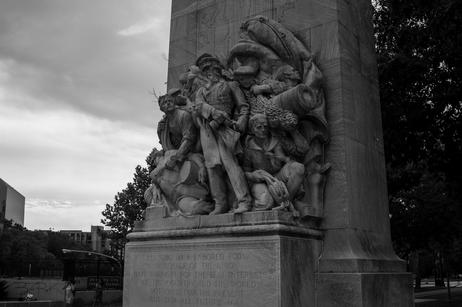One of the largest and oldest school districts in the country is the School District of Philadelphia. This public school system is the eighth largest school district in the United States, and it dates back nearly two centuries. As such, the district has faced more than a few challenges throughout its long and illustrious history. From the passage of child labor laws at the end of the 19th century to the restructuring of the governance of the district today, the School District of Philadelphia has seen its share of strife and success.
The Early Years of the School District of Philadelphia
The School District of Philadelphia was established in 1818, although the school board was not created until a number of years later. The states that changes in the city at that time prompted the state government to establish a public school district when crime and poverty were becoming huge issues for the growing city. The school system was designed to provide a public education to the city鈥檚 poor children after forcing their free entry into private schools did not work as planned.
This video offers a look at one of the early school buildings, the Bok Building.
While the new system was an improvement over what had been established in the past, it still failed to miss the mark in many ways. Some of those problems were answered with the Pennsylvania Society for the Promotion of Schools, which was created by the first school board president, Roberts Vaux, who determined that more was needed to ensure free public education for all. At this time, schools in Philadelphia became truly free and accessible to all children within the city of Philadelphia. Policies introduced by Vaux closely mirrored the common school movement initiated by Horace Mann at the time, and more children began to receive an education through government efforts.
Public schools in Philadelphia grew quickly during those early years, and more schools were opened in the Philadelphia area to accommodate the growing numbers. By 1867, two-thirds of the youth in Philadelphia between the ages of six and 12 were attending a school operated by the district. At this time, schools were segregated by race, and some schools were restricted to girls, while others only admitted boys.
The year 1911 was considered a turning point in Philadelphia鈥檚 public school system, according to . At this time, state lawmakers gave the local school board the authority to raise the funding needed to run the school district. At this time, the school board was able to amass the funding needed to significantly expand the public schools in the area, to accommodate a period of exponential construction to create sufficient space for the growing number of public school students in the city.
Like other school districts across the country, the School District of Philadelphia faced serious challenges to its segregation policies after the Supreme Court decision Brown v. Board of Education in 1954. The Philadelphia school district desegregated schools five years after that decision, although many white students moved out of the district over the next two decades, leaving a diverse student population that was primarily African-American. Today, the student population in the School District of Philadelphia is widely mixed, offering some unique educational challenges and opportunities to those who oversee and work within the district.
This video offers an overview of the history of public education in Philadelphia.
School District of Philadelphia Today
Today, this school district boasts 291 schools that serve more than 166,000 students and employs around 11,000 teachers, according to numbers published on . The district has a number of schools that have been recognized by U.S. News and World Report and continually strives to provide the highest possible quality of education to all the students within its boundaries. The school website states that it believes all children can reach their learning potential and that the achievement gap that currently exists between students from high and low-income families, and those with disabilities, can be eliminated.
The breakdown of the demographics of the School District of Philadelphia is as follows:
- African-American students (64 percent)
- Hispanic students (15 percent)
- White students (13 percent)
- Asian American students (5 percent)
A diverse student population like this presents unique challenges to any school district. The School District of Philadelphia has answered the call with fully-segregated schools that offer a wide range of services and programs to all students.
The School District of Philadelphia is currently governed by a School Reform Commission, which was established in 2001, according to . The commission replaced the original school board and consists of five members that are appointed by both the governor of Pennsylvania and the mayor of the city. This commission sets policy in regard to school operations, financial management, and hiring and retention of the superintendent for the district. All of the policies, programs, and spending decisions for the district must now be approved by the School Reform Commission.
The superintendent of the School District of Philadelphia continues to oversee the administration of the school system. This individual also introduces programs for the district and is responsible for the implementation of those programs. The superintendent is held accountable by the School Reform Commission, giving much of the authority for the district to members appointed by both the governor and mayor. The district also employs principals at all of its schools, and the primary responsibility of these administrators is to oversee the daily management of their schools, including academic achievement, safety, and teacher performance.
The School District of Philadelphia is one of the oldest public school systems in the country, offering a snapshot of the history of the country overall. With many changes since the district was established nearly two centuries ago, this school system is striving to remain modern and relevant in a constantly changing society.
Questions? Contact us on Facebook. @publicschoolreview















